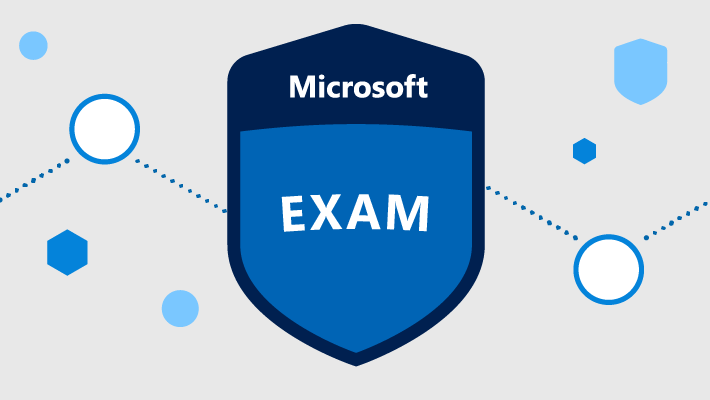To szkolenie jest odpowiednikiem wycofanego szkolenia "Szkolenie zgodne z MS 20741 Zarządzanie usługami sieciowymi w systemie Windows Server 2016"
O tym kursie
This five-day instructor-led course examines the services and features of Microsoft Windows Server from 2012 to 2022, including lessons and lab exercises on key attributes you’ll need on the job. It’s designed for IT professionals who have some networking knowledge and experience, and who are looking for a single course that provides insight into core and advanced Windows Server networking technologies. This audience typically includes network administrators and system and infrastructure administrators.
Profil odbiorcy
This course is for IT pros that have some networking knowledge and experience, and who are looking for a single course that provides insight into core and advanced Windows Server networking technologies. This audience typically includes network administrators and system and infrastructure administrators.
Czego się nauczysz?
This module details how to plan and implement an IPv4 addressing scheme to support your organization’s needs. The module also explains how to use fundamental networking tools and techniques to configure and troubleshoot IPv4-based networks.
Lessons
Lab 1: Plan an IPv4 addressing scheme
Automatic IP configuration makes it easier to manage IP hosts. In this module, students learn how to deploy and manage the DHCP server role, select a high-availability option for DHCP, and configure DHCP failover.
Lessons
Lab 1: Implement DHCP
This module details how to plan and implement an IPv6 addressing scheme to support your organization’s needs. It also includes specifics about configuring coexistence between IPv4 and IPv6 and explains options for transitioning to IPv6.
Lessons
Lab 1: Configure and evaluate IPv6 transition technologies
This module explains the fundamentals of using Domain Name System (DNS) for simple name resolution, and then details more advanced topics, such as the GlobalNames zone, Domain Name System Security Extensions (DNSSEC), and split-brain syndrome. These modules detail how you can install, configure, and troubleshoot DNS within an organization’s network.
Lessons
Lab 1: Plan and implement DNS name resolution
Lab 2: Integrate DNS with AD DS
Lab 3: Configure advanced DNS settings
This module introduces IPAM functionality, explains how to deploy IPAM, and shows student how to manage DNS and DHCP functionality by using IPAM.
Lessons
Lab 1: Implement IPAM
In this module, students learn how to implement remote access technologies in Windows Server. They will also learn about different implementation scenarios for small or medium-sized organizations and enterprise organizations. In Windows Server, four component technologies—virtual private network (VPN), DirectAccess, Routing, and Web Application Proxy—integrate into a single, unified server role called Remote Access.
Lessons
Lab 1: Implement a Web Application Proxy
Lab 2: Implement a VPN
In this module, students learn several ways in which to use Windows Server to overcome the limitations of branch-office scenarios. They’ll learn about using Distributed File System (DFS) and Windows BranchCache.
Lessons
Lab 1: Implement DFS for branch offices
Lab 2: Implement BranchCache
Windows Server includes advanced high-performance networking features, such as server message block (SMB) 3.1.1, Quality of Service (QoS) options, and several enhancements on the receiving end of network packet processing. Additionally, high-performance networking features are available to the Microsoft Hyper-V role and the virtual machines (VMs) that are running under Hyper V, such as expanded virtual-switch functionality and extensibility, single-root I/O virtualization (SR-IOV), dynamic virtual-machine queuing, and NIC Teaming for VMs. In this module, you will learn how to deploy and configure advanced networking in Windows Server and the new Hyper-V networking features.
Lessons
Lab 1: Configure advanced Hyper-V networking features
Firma jest Autoryzowanym Ośrodkiem Szkoleniowym MICROSOFT Silver Learning
Możesz u nas podejść do egzaminu Pearson VUE
Spółka posiada wpis do ewidencji placówek niepublicznych Nr ew. ES.VIII.4320-6/p.n./2003 wydany z upoważnienia Prezydenta Miasta Łodzi
 |
 |
Zachęcamy do skorzystania z możliwości dofinansowania szkoleń oferowanych przez naszą firmę. Dostępne rozwiązania:
Skontaktuj się z nami, aby uzyskać więcej informacji. Oferujemy pełne wsparcie w tym procesie.
Zapraszamy!
|
|
|
Przewidziany egzamin do szkolenia: 70-741
Zapisz się na egzamin już dzisiaj! Kontakt do Centrum Egzaminacyjnego: it@ntg.pl tel: 502 147 093 lub zapisz się przy pomocy formularza.


Najbliższy termin: Prosimy o kontakt
Najbliższy termin: Prosimy o kontakt
Najbliższy termin: Prosimy o kontakt
Najbliższy termin: Prosimy o kontakt
Najbliższy termin: Prosimy o kontakt
Najbliższy termin: Prosimy o kontakt
Najbliższy termin: Prosimy o kontakt
Najbliższy termin: Prosimy o kontakt
Najbliższy termin: 13-11-2025 09:00
Najbliższy termin: Prosimy o kontakt
Najbliższy termin: 27-11-2025 09:00
Najbliższy termin: Prosimy o kontakt
